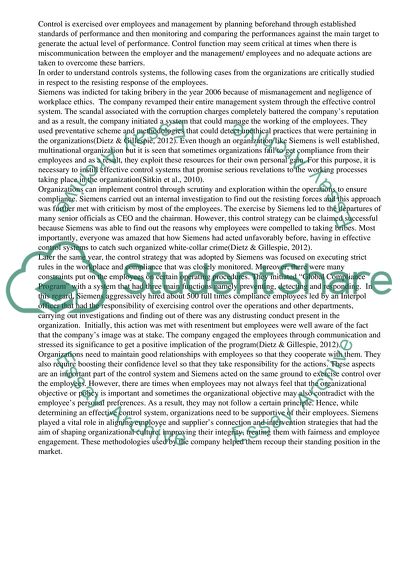Cite this document
(Organizational Supervisory Control Case Study Example | Topics and Well Written Essays - 2750 words, n.d.)
Organizational Supervisory Control Case Study Example | Topics and Well Written Essays - 2750 words. Retrieved from https://studentshare.org/management/1821715-presenting-evidence-from-one-or-more-organizations-of-your-choice-or-by-analysing-organizational-cases-critically-present-and-discuss-how-control-is-exercised-over-employees-and-managers-and-explain-the-role-of-resistance-and-compliance-in-contemp
Organizational Supervisory Control Case Study Example | Topics and Well Written Essays - 2750 words. Retrieved from https://studentshare.org/management/1821715-presenting-evidence-from-one-or-more-organizations-of-your-choice-or-by-analysing-organizational-cases-critically-present-and-discuss-how-control-is-exercised-over-employees-and-managers-and-explain-the-role-of-resistance-and-compliance-in-contemp
(Organizational Supervisory Control Case Study Example | Topics and Well Written Essays - 2750 Words)
Organizational Supervisory Control Case Study Example | Topics and Well Written Essays - 2750 Words. https://studentshare.org/management/1821715-presenting-evidence-from-one-or-more-organizations-of-your-choice-or-by-analysing-organizational-cases-critically-present-and-discuss-how-control-is-exercised-over-employees-and-managers-and-explain-the-role-of-resistance-and-compliance-in-contemp.
Organizational Supervisory Control Case Study Example | Topics and Well Written Essays - 2750 Words. https://studentshare.org/management/1821715-presenting-evidence-from-one-or-more-organizations-of-your-choice-or-by-analysing-organizational-cases-critically-present-and-discuss-how-control-is-exercised-over-employees-and-managers-and-explain-the-role-of-resistance-and-compliance-in-contemp.
“Organizational Supervisory Control Case Study Example | Topics and Well Written Essays - 2750 Words”, n.d. https://studentshare.org/management/1821715-presenting-evidence-from-one-or-more-organizations-of-your-choice-or-by-analysing-organizational-cases-critically-present-and-discuss-how-control-is-exercised-over-employees-and-managers-and-explain-the-role-of-resistance-and-compliance-in-contemp.


